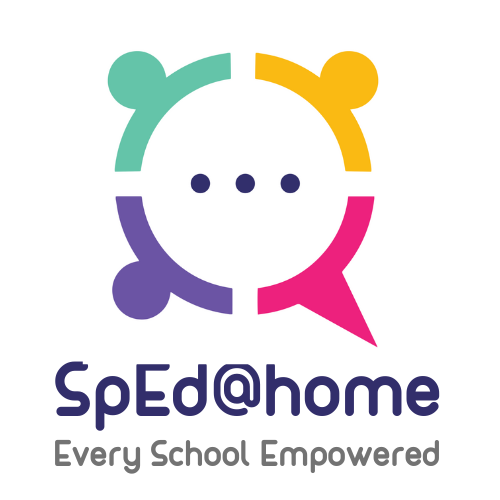Get ready to celebrate as SpEd@Home hits an exciting milestone—4 years of transforming special education!Launched with a mission to bring life-changing educational technology to children with learning disabilities, ADHD, and Autism, SpEd@Home has grown into a global movement, now serving over 100,000 children and 22,000 teachersacross 7 countries! What started as a dream in India has flourished into a worldwide revolution.
A Journey of Growth & Impact
Over the past four years, Vrudhi EdTech hasn’t just created one solution—it’s built an entire ecosystem with fourunique products: SpEd@Home, SpEd@School, SpEdJunior, and SPEEDY LABS. At the core is SPEED 2.1—the ultimate AI-powered assessment tool that creates personalized learning plans and offers real-time feedback, so children get exactly what they need, exactly when they need it.
Crushing Barriers, Changing Lives
We’re breaking down walls! SpEd@Home is designed to make special education accessible for every child, no matter where they live or what language they speak. With 50,000+ hours of expert coaching and a 4.9-star rating from parents and educators, it’s no wonder we’ve become the go-to platform for families worldwide. Our powerful partnerships with organizations like Science and Technology Park Pune, Wadhwani AI, and AnjalZ have made our mission even stronger. Plus, we’re now working with the Ministry of Education, Abu Dhabi to make special education even more accessible.
Global Expansion & Exciting New Launches
As we celebrate, we’re also growing! SpEd@Home is launching its services in more locations—and we can’t wait to make a difference for families, globally. We’re also splitting our websites into two user-friendly platforms—one for SpEd@Homeand one for SpEd@School—so parents and schools can easily find exactly what they need.
But that’s not all—our new app, SpEdJunior, is designed for young learners aged 3-8, ensuring they can thrive with hands-on learning paired with real-time progress tracking. Launching soon!
Looking to the Future: Innovation in AR & AI
Ready for the next level? SpEd@Home is rolling out a gamified, AR-based therapy module in December 2024 that will help children everywhere access occupational therapy like never before. Plus, stay tuned for our AI-driven speech therapy and multilingual learning solutions coming in December 2025.
SpEd@Home: A Global Movement for Change!
With support from angel investors in Singapore and India, our vision is clear—by 2028, we’re on track to touch the lives of 1 million children! Our mission is simple: Empower every child, no matter where they are, to reach their full potential. Together with parents, teachers, and therapists, we’re building a future where every child with special needs has the tools they need to thrive.
UPDATE: Event Closed
In today’s fast-paced world, the challenges faced by students within the school setting extend far beyond the pages of textbooks. As we witness an increasing prevalence of anxiety among students, it is imperative that we come together to address this growing concern. We are excited to extend an invitation to our upcoming webinar, where we will delve into the topic of “Navigating Anxiety in the School Environment.”
Registration Details
We invite educators, school counselors, parents, guardians, and anyone with a vested interest in student well-being to join us for this enlightening webinar. Don’t miss out on the opportunity to be part of this vital conversation. With limited slots available, we encourage you to act swiftly.
Mark Your Calendars:
📅 Date: 16th August, 2023
🕒 Time: 4:30 PM to 5:30
Topics to cover
The school environment, once solely associated with learning and growth, is now a complex landscape where various forms of anxiety can take root. From the sleepless nights brought about by Generalized Anxiety Disorder (GAD) to the heart-wrenching experiences of Separation Anxiety, these emotions can significantly impact students’ academic performance, social interactions, and overall well-being. The webinar aims to equip educators, parents, and caregivers with a profound understanding of the diverse anxiety profiles students may exhibit. By recognizing the signs and symptoms of anxiety disorders such as Social Anxiety Disorder and Selective Mutism, attendees will be better prepared to provide the necessary support and interventions that can make a world of difference.
One of the webinar’s focal points is emphasizing the importance of collaboration between educators and parents. By working hand in hand, we can create an environment that nurtures emotional well-being. School staff and parents both play pivotal roles in recognizing and addressing anxiety in students, offering them the guidance they need to thrive both academically and emotionally. Our expert speakers, who are seasoned professionals in the field of mental health and education, will share invaluable insights and strategies during the webinar. From understanding the nuances of each anxiety manifestation to implementing effective communication techniques and resilience-building methods, attendees will gain actionable knowledge that can be applied immediately in real-world scenarios.
The webinar will also explore ways to build resilience in students, helping them develop the tools to manage anxiety effectively. We believe that fostering a school environment that embraces inclusivity and emotional safety is the cornerstone of supporting students with anxiety disorders. By creating a safe space for expression, we can help them navigate the challenges they face.
Generalised Anxiety Disorder (GAD)
Students with Generalized Anxiety Disorder may exhibit excessive worry and apprehension about various aspects of school life, such as academic performance, tests, social interactions, and future outcomes. This persistent anxiety can affect their concentration, leading to academic challenges and impacting their overall well-being.
Separation Anxiety
Separation anxiety in school students involves intense distress when separated from parents or caregivers. This can result in difficulty focusing on schoolwork, reluctance to attend school, and emotional upheaval during transitions, ultimately affecting their classroom experience.
School Phobia
School phobia, also known as School Avoidance, is characterized by extreme fear and anxiety related to attending school. Students with school phobia might experience physical symptoms like stomachaches or headaches, leading to consistent absenteeism and hindering their engagement with learning.
Social Anxiety Disorder
School students with Social Anxiety Disorder often feel extreme discomfort in social situations, including interactions with peers and teachers. This can impact classroom participation, group activities, and presentations, as the fear of negative evaluation hinders their ability to express themselves.
Elective Mutism
Elective Mutism presents as a consistent inability to speak in specific situations, even though the student is capable of speech. In a school context, this might manifest as a student being unable to speak in class or around certain peers, impeding their ability to communicate and engage in learning.
Recognizing these anxiety profiles in school students is crucial for providing appropriate support, fostering an inclusive environment, and helping them thrive academically and emotionally. Together, we can navigate anxiety’s complex maze and guide our students towards a brighter and more resilient future.
UPDATE: Event Closed
In today’s society, the principles of diversity and inclusion are being increasingly recognized as essential elements in promoting a fair and equal education system. Nowhere is this more crucial than in the realm of special education, where it is imperative to create an environment that caters to the unique needs of every child. By decoding diversity and inclusion in education for special children, we can ensure that no child is left behind and that they are given every opportunity to thrive academically, socially, and emotionally.
We are delighted to invite you to our Wednesday Webinar on “Decoding Diversity and Inclusion in Education” by Dr. Asmita Huddar – Principal, CCYM’s HASHU ADVANI COLLEGE OF SPECIAL EDUCATION (HASCE). This webinar aims to shed light on the significance of diversity and inclusion within educational institutions and provide practical strategies for creating inclusive learning environments.
Topics of discussion
- The Importance of Diversity and Inclusion in Educational Settings
- Recognizing and Addressing Implicit Bias in Teaching and Learning
- Strategies for Cultivating Inclusive Classroom Environments
- Supporting Marginalized Students and Promoting Equity in Education
- Empowering Student Voices and Amplifying Underrepresented Perspectives
- Best Practices for Building Inclusive Schools
Diversity in the context of special education encompasses a wide range of factors, including but not limited to race, ethnicity, socioeconomic status, gender identity, language, and disability. Recognizing and celebrating this diversity is the first step towards creating an inclusive environment. It is essential to understand that each child is unique and possesses their own strengths, challenges, and potential. By embracing this diversity, educators can tailor their teaching strategies and provide individualized support to help each student reach their full potential.
Inclusion goes beyond mere acceptance. It involves actively engaging and involving all students in the learning process, regardless of their abilities or disabilities. Inclusive education aims to eliminate barriers and create a supportive atmosphere where all children can learn together, interact, and grow. Inclusion recognizes that diversity is not a hindrance but an opportunity for mutual understanding and growth. By including special children in mainstream classrooms, we foster empathy, reduce stigma, and promote a sense of belonging among all students.
One of the key aspects of decoding diversity and inclusion in education for special children is providing appropriate accommodations and support. This may include specialized teaching methods, assistive technologies, modified curricula, and classroom adaptations. By accommodating the unique needs of each student, educators can create a level playing field and ensure that every child has equal access to education. It is important to recognize that inclusion does not mean treating all students the same; it means providing tailored support to meet individual needs.
Effective collaboration between teachers, support staff, parents, and specialists is another crucial element in decoding diversity and inclusion in education for special children. By fostering open lines of communication and working together as a team, educators can create a comprehensive support system that addresses the multifaceted needs of special children. This collaboration ensures that interventions and strategies are consistent across different environments, reinforcing learning and promoting a seamless transition between school and home.
Furthermore, promoting diversity and inclusion in education for special children requires ongoing professional development for educators. Teachers need access to training, resources, and workshops that enhance their understanding of diverse needs and effective teaching strategies. By continuously updating their knowledge and skills, educators can better address the evolving needs of their students and create a nurturing environment where all children can thrive.
In conclusion, decoding diversity and inclusion in education for special children is a multifaceted endeavor that requires a commitment from all stakeholders involved. By embracing diversity, providing appropriate accommodations, fostering inclusion, promoting collaboration, and investing in professional development, we can create an education system that celebrates the uniqueness of every child and ensures that no child is left behind. Only through such inclusive practices can we truly unlock the full potential of special children and empower them to become active, engaged, and successful members of society.







